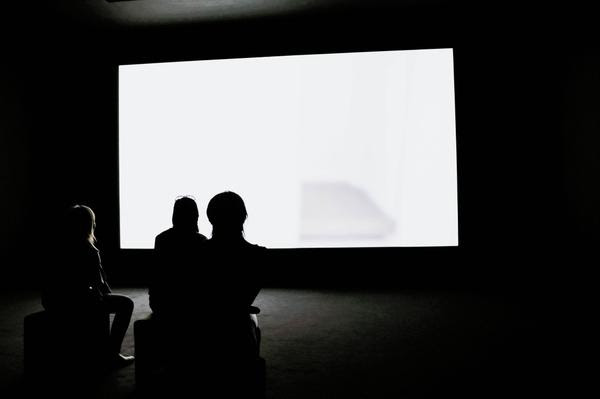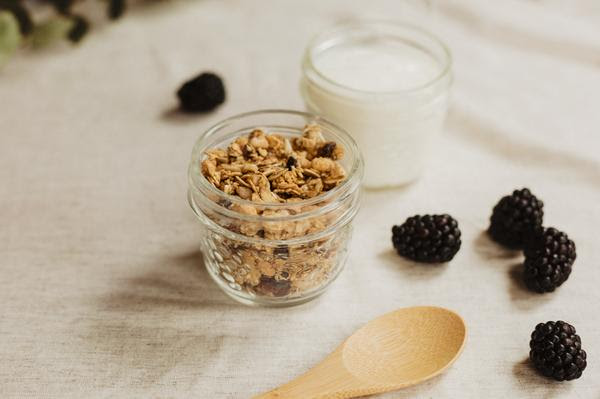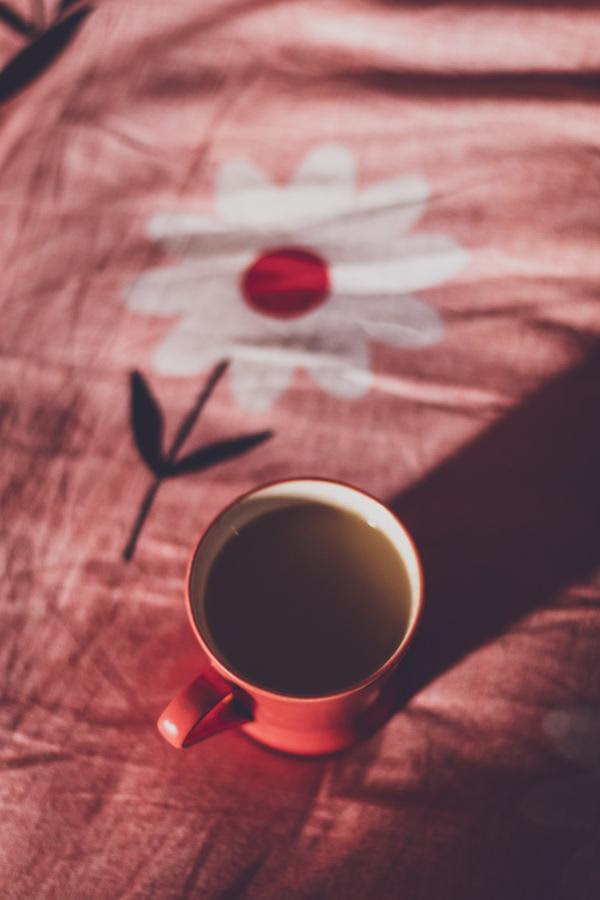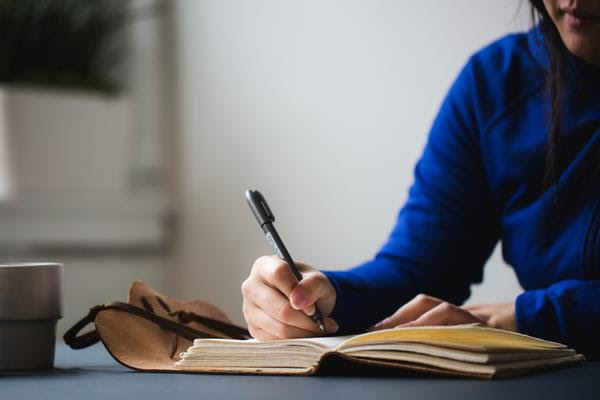
This weekend brings us the winter solstice (and honestly thank goodness because for my sanity I really need the days to start getting longer again) and the darkest day of the year should naturally be a time of hibernation and restoration… i.e. good quality sleep.
Sleep is so important to your long term well being that you literally can’t live without it… sleep is non-negotiable and absolutely essential for longevity. And the good news is, that no matter how bad your sleep is right now, you are only ever one night away from a good night of sleep. So maybe on this winter solstice night, we can make that night your best night of sleep all year.
It doesn’t matter how long you’ve struggled with insomnia or how big your sleep deficit is. Every single night is an opportunity to completely turn that around. Because your last night’s sleep affects your next’s night’s sleep, when you have a really poor night just think of it as increasing your sleep pressure to make it all the more easy to repair your sleep the very next night.
So right now I am going to give you tons of ideas on deepening your sleep to protect your health… which is more critical now, than ever. I have listed them in the order you would do them throughout the day — starting with the moment you wake up and ending with a night full of blessed dreams. Let’s go:

1. Get Morning Light On Your Face
To easily correct your circadian rhythm, totally naturally, get into a habit of getting natural light on your face every single morning as early as possible outdoors.
20 — 30 minutes is ideal, but even just 10 minutes greeting the day will make a difference in your sleep that very night. Sometimes I can only have a cup of coffee in front of a well lit window for 5 minutes in the morning but it is still helpful to get that light on my face.
Another idea is to simply use a light box when you wake up.
In addition to spending a bit of time outside or in front of a well lit window each morning, I use my light box every day — especially crucial for me all fall and winter long — I aim for 20 minutes while I attend to my emails or am packaging up orders for you
 Effective to not only boost your daytime energy levels (making you more active during the day, when it’s healthiest to be active!) a light box will also help you sleep better that night… naturally, without taking any medications or supplements at all.
Effective to not only boost your daytime energy levels (making you more active during the day, when it’s healthiest to be active!) a light box will also help you sleep better that night… naturally, without taking any medications or supplements at all.
Perfect for those who don’t want to risk any untoward side effects from taking pills, a light box does more than just correct your circadian rhythm, light boxes have been shown to directly treat depression as good as a Rx medication and even boost libido.
You can find the lightbox I love most right here.

2. Get Grounded During The Day
If you can touch the earth outside for even a few minutes a day, do it. Grounding helps you establish (or re-establish) an healthier circadian rhythm, ensuring your body knows when it is day and when it is night. It also helps to decrease cortisol levels over time, which is another crucial component of high quality sleep.
If you have one rock outside you can touch, one blade of grass (even a weed!) you can touch, one leaf on a tree or bush outside, one corner of a cement driveway or garage or one square inch of sidewalk you can stand on, you can be instantly grounded. Even in the winter, you can and should get grounded outside. Here is the ultimate resource guide to grounding in the winter — yes you absolutely can ground even wearing gloves and boots, hop over here to find out how:
How To Ground Outside, Even In The Winter
The effects of grounding the human body start instantly, so there is no time too short for getting grounded — if it can only be 30 seconds, so be it. If it can be 15 min, or 30 minutes, all the better.
Want more inspiration to make a grounding practice into a daily health routine?
Just like brushing your teeth or wearing a seatbelt, grounding is another one of those non-negotiable health care practices. So I’ve got you.
My book The Earth Prescription is all about how to get outside not matter what the season, no matter what the weather, no matter what the location, no matter if you have green spaces outside or not, no matter if you have 5 minutes or 5 hours to ground, urban settings, winter temperatures, no matter what the circumstance.
It’s filled with tons of easily actionable ways to stay connected to our planet and boost your health during 2022 and beyond. In fact, if there was one guide I’d want you to have to make 2022 your healthiest year yet, it would be to read this book and refer to it daily.
Meanwhile, I’ve got lots of great ideas for grounding outside — lots of free content awaiting you on:
- my ticktock channel
- my instagram page
- my facebook page
- and my youtube channel.
For starters, check out this video on 15 different ways you can directly ground outside even when you have no grass, no public greenway, and no yard to get grounded on.

3. Move Your Body Every Single Day
Walking each day is the one of the best things you can do to prolong your life.
You have to move your body daily. Walking has been shown to do everything from predict better remission rates during cancer recovery to prolonging life span to simply helping deepen sleep at night, which is why it’s included in today’s list.
If I am not sleeping well at night I have to ask myself, did I truly move my body during the day? Increase your daytime activity levels and watch your nighttime sleep deepen. It’s directly proportionate.
Hop over to this blog post for easy ideas to increase your daily movement even when staying indoors in the dead of winter.

4. Decrease EMF Exposures In Your Bedroom
Decreasing the disruption to your sleep at night by decreasing your EMF exposures in your sleeping area — removing those you can remove, decreasing those you can decrease, and shielding from those you can’t do anything about — this will help your body truly restore it’s health during sleep.
If you lay in bed and feel overstimulated, I definitely think it’s worth checking out what your EMF exposures are, at least where your bed is. Because in a world where you can’t do much about decreasing your daytime exposures to radiation, decreasing them at night gives your body a precious opportunity to recover and boost your health resilience.
Ahh… the relief is literally immediate. You can actually feel your entire autonomic nervous system relax and appreciate the break from the constant onslaught of eSmog that is pervasive across the globe now. If you’d like my help walking through how to measure and reduce your EMF exposures, I would love to work with you in my upcoming Electrosensitivity Class… reserve your spot here.
And meanwhile, I’ve put together this page filled with free, actionable things you can literally do today, before hopping in bed tonight, to reduce your exposures. Feel free to share it:
Free Electrosensitivity Resources

5. Block Blue Light From Reaching Your Eyes
Ok I’m a mother of a 20 year old and an 18 year old (dang how the time has flown) and it’s just completely unrealistic for me to expect them not to use their computers to complete college assignments. Or use their phone to stay in touch with friends, or to use their televisions to catch up on their favorite TV shows or movies when they can catch a break.
That said, you can make the glow from these screens less disruptive to circadian rhythm simply by the compromise of wearing blue light filtering glasses, like these.
You can find blue light filtering glasses almost anywhere, but make sure they are dark yellow to orange, not light yellow, in order to block enough blue light that it actually makes a noticeable difference in your ability to fall asleep. Start wearing them after dinner and I am certain you will notice that it’s easier to fall asleep literally that very same night.

6. Take Probiotics Daily
The mind/gut connection is completely underrated. Decreased gut flora has been linked with anxiety and probiotics are now shown to be an effective treatment for both anxiety and depression, and as a bonus, they boost immunity.
Since probiotics are being aptly called “psychobiotics†because of their beneficial influence on brain function, it’s not much of a surprise to see that they also result in an improvement in sleep. Research published in 2019 in Frontiers In Psychiatry showed that after 6 weeks of taking probiotics, participants has significantly improved sleep quality. You can read that research for yourself right here.
My favorite way to reestablish a healthy gut balance is to kick start any probiotic regime with a 7 day intensive probiotic inoculation. In one week you will have dramatically improved your gut flora — I highly recommend starting with this 7 day supplement and repeat it after every time you take an antibiotic as well.
I have these waiting for you, along with all the other supplements I suggest below, in one easy Sleep Restore Protocol that you can look at right here:
Sleep Restore Protocol

7. Take Melatonin At Dusk
I hear all the time from folks who say that melatonin doesn’t work for them.
The most likely reason why is because they were taking them at the wrong time. You have to take melatonin as the sun is setting, not at night. This is the key!!! It must be at dusk, not 1 hour before bedtime (as usually instructed on the bottle of most melatonin supplements.)
Whether dusk is at 4 pm or 10 pm or any time in between, no matter what part of the season you are in or where you live, take melatonin as the sun goes down. This is when it is natural for your body to have rising melatonin levels, and it will naturally relax you through the evening so that you are ready for bed whenever you are finally able to hit the hay.
It doesn’t matter if you don’t plan to go to bed for several more hours, still take it at dusk, as that is our natural rhythm of melatonin production.
This one simple tweak can change everything for people who think melatonin doesn’t work for them. Take it as the sun goes down and you will find that no matter when you finally go to bed that night, you are so much more aligned with falling asleep than you would every have been only taking melatonin an hour before bed. If you take it at bedtime, your body has already missed the window of the natural circadian rhythm signaling that night is approaching.
I’ve found that patients can take a much much smaller effective dose of melatonin, sometimes as small as only 0.3 mg (instead of the usual 5 mg) as long as they are taking it right at dusk! Again, my favorite melatonin supplements, along with all the other supplements I’ve recommended in this article, are all waiting for you in my Sleep Restore Protocol here. I’m sharing this with you here because I find I get so many emails asking which exact supplements I recommend (as well as a trust worthy place to order them, since there are so many places, like Amazon, where they don’t properly store supplements.
Supplements are an investment in your health, so the last thing you want to have is supplements that were not stored properly and by the time you get them in hand they are deactivated and a waste of money) so that’s why I want to be sure you know a reliable source for supplements in case you don’t already have one! If you have a different online supplement shop you love, I’m sure you can still look at the protocol to write the names of each supplement down and then find all the same supplements in your preferred shop.

8. Take L-Theanine To Help Decrease Intrusive Thoughts At Night
GABA is the brain’s soothing neurotransmitter.
If you are have trouble with anxiety or racing thoughts at bedtime, you might feel the calming benefits of supplementing with a product containing L-Theanine, which crosses the blood brain barrier and converts to GABA in the brain to help relax over active thoughts.
A supplement called GABA Trex is my favorite L-theanine supplement, because it is a chewable tablet and doesn’t require water, which means you can leave it on your nightstand and chew one right before bed if it is just one of those nights where your brain is feeling restless… or chew one if you wake up in the middle of the night and can’t get back to sleep.
I know this is repetitive, but like all the supplements I mention in this article, you can find my favorite GABA Trex in my in my Sleep Restore Protocol here.

9. Get Up And Drink A Warm Magnesium Drink If You Still Can’t Sleep
Magnesium is a natural muscle relaxant, and because it helps your muscles relax and release, it is a wonderful nighttime drink. Most of us do not get enough magnesium (even when it is included in your multivitamin or you have a very healthy diet — it’s just not enough and it leaves us with tight muscles, anxiety, constipation and more.)
On nights when your muscles are feeling tense (especially helpful for anyone who grinds their teeth at night, has neck and shoulder tension, or has restless legs syndrome) instead of laying in bed growing more and more frustrated, break out of that rut by making yourself a hot cup of water with a teaspoon of powdered magnesium drink mix stirred into it.
There are lots of different magnesium powdered drink mixes, and of course I’ve put my favorite one in my Sleep Restore Protocol right here. Just get up, take 10 minutes to sip your warm magnesium beverage, then settle back in and literally feel your muscles relax as you sink into bed more deeply.
There, isn’t that so much better?

10. Keep A Dream Journal
There are so many benefits to your body and mind and spirit from getting deep restorative sleep. And one of the very best benefits is that you can process and release stress while you sleep!
If you find dreams fascinating, keeping a dream journal is a fun project to undertake during winter, a time of hibernation anyway. I encourage you to sleep with it right by your bedside, so that you can wake up and — while you are still in that open, groggy, free flowing, intuitive hypnogogic state — record any feelings, thoughts, images, memories, impulses, sights, sounds, topics, ideas, etc… that you got from your dreams the night before.
There are lots of different types of dreams… some are simply to release old issues you are done with, some are just processing types of dreams to enhance memory and recall, some are about subconscious fears releasing… so it’s not necessary to take all of your dreams seriously or focus on ones that are disturbing or frightening. If you find yourself waking from a truly frightening dream, it’s really important to remember that this likely arose from deeply held or suppressed fears or worries or anxieties that you have held onto because of past experiences, traumas, hurt feelings, past life wounds, etc… and just to let them go.
But if you do wake up from a dream and feel it is symbolic, you might want to have a dream journal by your bedside to jot it down in — one specific animal, situation or event that you are left with upon waking… for example, you battled a snake all night long, you were swept away in a flood, you watched a mystical creature swooping down breathing fire all around you. These dreams arise from your subconscious and they are the brain’s way of dealing with big themes that are going on in your life. While they can be informative — often full of fear or violence or sexuality or power struggles or other dynamics you are trying to sort and release in your life, I think of these dreams as more an intellectual exercise in processing and releasing. These are fun and interesting to record and might give you insight into how your mind is working on certain issues, but I would take this the same way you deal with your monkey mind during waking hours — with a bit of humor and not so seriously!
Every once in a while you might be lucky enough to get a dream that is incredibly calming and centering. These are the dreams where are you connecting with something bigger than yourself — dreams about speaking to someone who has passed away, or seeing a long deceased pet, or a conversation with a spiritual guide or teacher, dreams of flying or astral travel or falling or riding elevators or going through tunnels or attending meetings or being a student learning incredible things. What is important to remember about these dreams are the physical sensations and *felt sense* that you get from the dream… write down any directives or information that you wake with before it’s lost.
Keep your dream journals by your bedside so you can immediately record your experience in these types of dreams — they are lost very easily and forgotten, just like your intuition speaks quietly and can be easily overshadowed by the mind… these Divinely Inspired dreams are beautiful and centered and more quiet than your daily activities of life and are easily over ridden by the events of the day.
Do you want to hear about the coolest study I’ve seen in a while? Published in Current Biology on April 12, 2021, researchers interacted with sleeping subjects and showed, for the first time ever, that during REM sleep it’s possible for folks who are lucid dreaming to perceive and answer questions — in other words, the sleeping folks had real-time communication with the researchers. They were able to answer yes-no questions, compute math problems, and express replies through intentional eye movements and facial muscle movements.
This is the first documentation of two way communication with lucid dreamers. You can read this fascinating study for yourself right here:
Real-Time Dialogue Between Experimenters And Dreamers During REM Sleep

I hope this information helps you positively impact your circadian rhythm, helps you boost your mood, remedy your sleep, even protect the longevity of your lifespan.
A good night’s sleep is absolutely crucial to maintaining wellness — one thing is for certain — your body needs good sleep to function over a lifetime!
For more articles I’ve written on sleep health, click over to read:
- Sleep and Asthma
- Sleep and ADHD
- Sleep and Cancer Recovery
- Sleep and Alzheimers
- Sleep and Weight Gain
- Sleep and Mood Disorders (Anxiety, Depression)
- Sleep and Mental Illness

To Summarize:
Good sleep is non-negotiable for long term health. So this winter solstice, focus on getting deep restorative sleep and prioritizing sleep above other activities that might be distracting you. At least for this week, try a combination of: morning light on your face each day, daily grounding (no matter how brief), an after dinner walk, turning your cell phone and wifi off at night to reduce EMF exposures, as well as decreasing your blue light exposure after dinner, have some key supplements on hand to help out even more, and keep a dream journal as a way to make sleep something you look forward to, instead of a task.
And one last thing… do you follow my podcast yet? I’ve got more holistic sleep tips waiting for you there!
I recorded a 20 minute podcast for you all about a recent medical study on sleep, and run through all of these tips plus a few extra bonus tips (for a total of 14 holistic steps to your best night’s sleep yet!)
Hop over here to listen in and be sure to subscribe.
Intuition Physician Updates is a brand new podcast I just launched in 2021 and I’ll be adding new episodes on the latest holistic health news all year long!
Also be sure you are signed up to receive my free newsletter so you don’t miss any of the uplifting holistic healing tips I send out each week!
If someone forwarded you this email, you can sign up on my homepage to get these tips delivered directly to your own inbox by clicking right here and entering your email into the box at the top of the page:
To your naturally resilient, astoundingly incredible human body!
xoxox, Laura





